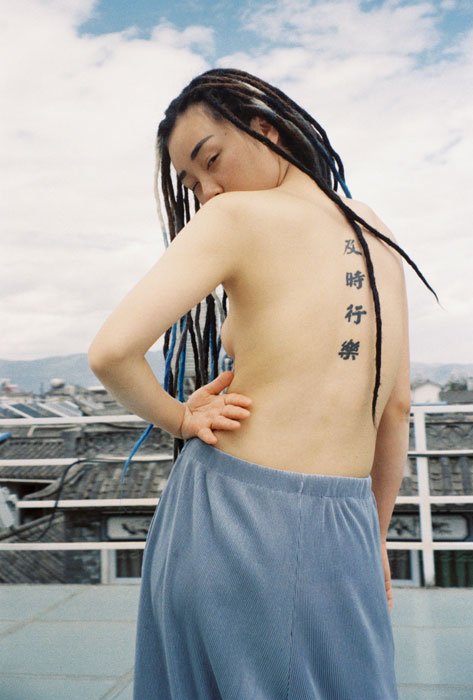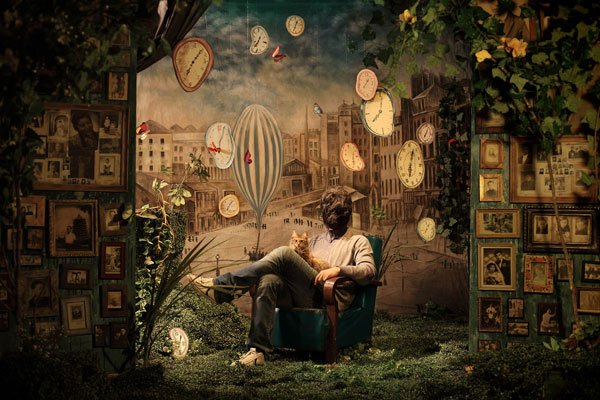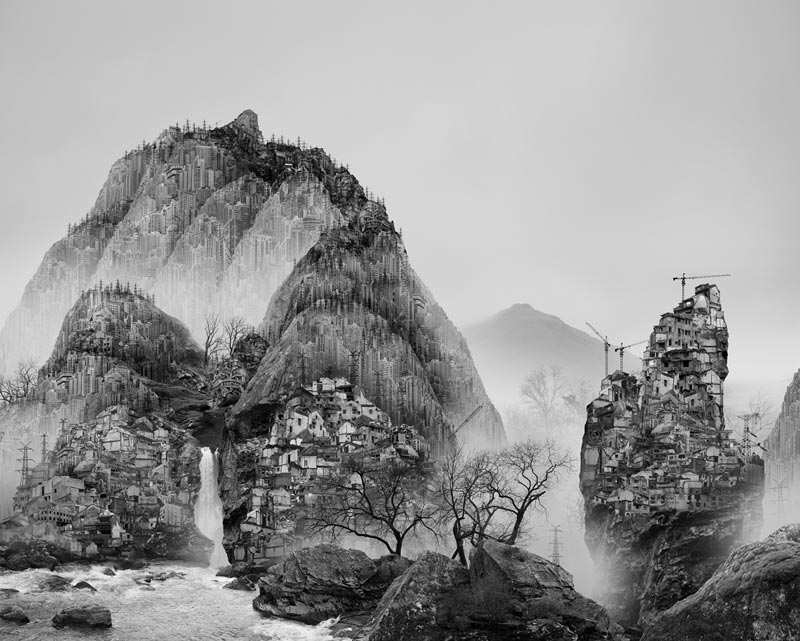An overview of the most famous modern Chinese photographers you should know and the websites where you can find more about their works.
Since I started my journey into Chinese contemporary art I saw many exhibitions and visited endless galleries but found modern photography and the emerging Chinese photographers a bit under-represented. The following list is, therefore, my approach to give you a quick overview of the most famous modern Chinese photographers today. If it was applicable I added their website or Wikipedia link so you can dig into their works on your own.
(please note that some of the artists are not only photographers since it is quite common that Chinese artist explore many different media during their career)
1. Ren Hang 任航 (1987-2017)





He was a photographer and poet born in a suburb of Changchun, in northeastern China. During Ren’s incipient career, he was known mostly for nude photographic portraits of his friends. His work is significant for its representation of Chinese sexuality within a heavily censored society. For these erotic undertones, he was arrested by PRC authorities several times and received the backing of the Chinese artist Ai Weiwei, who included Ren in his 2013 Netherlands show, Fuck Off 2 The Sequel, and curated the photographer’s 2014 exhibition in Paris.
(–>Rens webpage as archived by waybackmachine in 2017)
. . .
2. Luo Yang





Yang was born in 1984 in Shenyang and graduated from the Lu Xun Academy of Fine Arts in 2009 with a bachelor of fine arts and graphic design. Now she lives in Beijing and works with film only. Most famous are her girl portraits depict an emerging Chinese subculture that defies imposed expectations and stereotypes – GIRLS are bad-assed and self-aware, yet insecure, vulnerable and torn, with a supreme sense of cool. Her work has been exhibited in multiple venues in China and Europe, including Ai Weiwei’s exhibition “FUCK OFF 2” (2013)
–>check out my pinterest page about famous modern chinese photographers for Luo Yang
. . .
3. Maleonn





Also known as Ma Liang, is a Chinese graphic designer and photographer. Although his works deal with a variety of themes, all of them share a unique, surreal character which gives them almost a magical feel.
Maleonn was born into an artistic family in Shanghai in 1972 because his mother is an actress, while his father is the director of Beijing Opera. Maleonn graduated from the Fine Art College of Shanghai University, majoring in Graphic Design.
–>check out my pinterest page about famous modern chinese photographers for Maleonn
. . .
4. Yang Yongliang杨泳梁




is a Chinese contemporary artist, whose incredible mixture of traditional Chinese art and cutting-edge technology yields stunning landscape images that combine the old-school Chinese art and modern-day themes.
Born 1980 in Shanghai, he studied traditional Chinese painting and calligraphy before attending the Shanghai Art & Design Academy, where he specialized in decoration and design beginning in 1996. In 1999 he attended the China Academy of Art, Visual Communication Department, Shanghai. 2005 he started his career as an artist with the stated goal of “creating new forms of contemporary art.
–>check out my pinterest page about famous modern chinese photographers for Yang Yongliang
. . .
5. Chen Man 陈漫 (check as well on instagram)





Born 1980, is a Chinese visual artist. Her medium includes photography, graphic design, cinematography and digital art.
She also produces covers for fashion magazines and collaborates with major brands worldwide.
–>check out my pinterest page about famous modern chinese photographers for Chen Man
. . .
6. Li Wei

Li Wei (born in 1970, Hubei, China) is a contemporary artist from Beijing. His work often depicts him in apparently gravity-defying situations. Wei started off his performance series, Mirroring, and later on, took off attention with his Falls series which shows the artist with his head and chest embedded into the ground. His work is a mixture of performance art and photography that creates illusions of a sometimes dangerous reality. The artist states that these images are not computer montages, but that he uses mirrors, metal wires, scaffolding and acrobatics.
–>check out my pinterest page about famous modern chinese photographers for Li Wei
. . .
7. Wang Ningde

Wang Ningde was born in 1972 in Liaoning province and graduated from the photography department of the Lu Xun Academy of Art in 1995. After graduating, he moved to southern China where he worked for a decade as a photojournalist during the period of China’s explosive economic and cultural transformation. As an artist who works not only in traditional photography but also more recently in video and installation artwork, Wang Ningde attempts to decipher and answer the unanswerable, peeling back the layers of memory and the social facade, to probe and expose the more complicated and perhaps disconcerting issues of a personal past or humanity’s collective psyche.
–>check out my pinterest page about famous modern chinese photographers for Wang Ningde
. . .
8. Han Lei

He has worked with painting, sculpture, and installation, but photography remains his favored medium. Han was one of the first professional photographers following the Cultural Revolution in China, and has become known for his dramatically lit scenes with low saturation, featuring contemporary models acting out classical narratives or Chinese legends. The underlying themes in these works are sentimentality, nostalgia, and upheaving traditional notions of beauty.
9. Wang Qingsong

Wang Qingsong’s staged photographs are vehicles for incisive, witty commentary on economic expansion, social tension, and rising Western influence in contemporary China. Born at the beginning of the Cultural Revolution, he has seen China morph from an insular, rural society to a globally engaged dynamo. His art has evolved just as rapidly, from Gaudy Painting (a Chinese variation on Pop) to giant photographs staged in movie studios and short, performance-based videos.
10. Yang Fudong杨福东

Born in 1971 in Beijing, Yang Fudong received a BFA in oil painting from the China Academy of Art, Hangzhou, Zhejiang Province, in 1995 but pursued his artistic career in filmmaking and photography. Influenced by a wide range of visual references and formal considerations, Yang often stages contradictions between present social conditions, classical Chinese cultural tropes, and modern film culture to explore broader historical, social, and political themes. Featuring fragmented, overlapping, and abstract storylines, his film style is notable for its long suspended sequences and frequent use of black-and-white.
11. Cai Dongdong

Born in Tianshu, Gansu, in 1978, Cai Dongdong joined the People’s Liberation Army at a young age, taking up a role as a portrait photographer for enlisted soldiers. This job became his formal training in the medium, developing into a career path as he returned to Beijing and opened his own studio. Through the use of archival, found photography, and installation, Cai creates half-fragmented realities.
12. Birdhead鸟头

Ji Weiyu and Song Tao work together under the collective name Birdhead, making photographs of Shanghai, their hometown. Like the metropolis, their photographs teem with energy, and within the large grid of pictures no image or narrative is given preference.
Both artists graduated from the Shanghai Arts and Crafts School in 2000; Ji also studied at Central Saint Martins College of Art and Design in London. Ji and Song live and work in Shanghai.
13. Song Chao

Born in Shandong Province in 1979. Began his photography career in 2001. Currently lives and works in Beijing. Song grew up in a coal-mining district called Yanzhou, in China’s eastern province of Shandong. He started working in the mines as a teenager. When he was 23, he met a photographer who encouraged him to document the lives of his fellow workers.
14. Chen Wei陈维

Chen Wei was born in 1980, in Zhejiang Province. Currently he lives and works in Beijing. In his early career, he used to deal with experimental music and later turned to photography. Chen Wei’s photographs are believed to express his inner thoughts and emotions. Most of his works are finished in his studio.
15. Chi Peng 迟鹏

Chi Peng graduated from the Central Academy of Fine Art in Beijing, with Photography as his main subject, in 2005. Themes of loneliness evident in the photographer’s work are a direct result of the one child policy in China, and ideas surrounding escapism, adolescence and sexual identity evolve from a fear of failure prevalent in his generation.
15. Hong Lei 洪磊

Hong was born in Changzhou, Jiangsu in 1960 and graduated from Nanjing University of the Arts in 1987. In 1992, he went to the China Central Academy of Fine Arts to pursue advanced studies in printmaking. Inspired by his early art experience in Yuan Ming Yuan and learning from traditional Chinese paintings, he returned to Changzhou and soon started to use photography as a way of art representation since 1996.[
16. Liu Bolin刘勃麟

Liu Bolin was born in 1973 in Shandong, China and studied sculpture at the Central Academy of Fine Arts in Beijing, graduating with an MFA in 2001. Better known as “The Invisible Man” in media circles. He discusses the social concerns of his home country through his artistic practice, most prominently through his ‘camouflage’ installations. Traversing mediums such as performance, photography, Liu Bolin dissects the tense relationship between the individual and society by ‘disappearing’ into environments which are sites of contention and criticism.
17. Zhang Huan張洹

Zhang Huan (born 1965) is a Chinese artist based in Shanghai and New York City. Primarily he is a performance artist but also makes photographs and sculpture. His career began as a painter and then transitioned to performance art before making a comeback to painting.
18. Wang Wusheng

Wang Wusheng is a Chinese artist and photographer born in 1945 from Anhui Province in China. He is known for his black-and-white photographs of Mt Huangshan. He currently works in Shanghai and Tokyo.
19. Chen Jiagang

Chen Jiagang, 1962, China, studied architecture in Chongqing and became a full-time photographer in 2001. His large-scale images, some up to 4 meters wide, are a mix of documentary, conceptual and staged photography.

From the late 1990s, the Chinese artist Ou Zhihang 区志航(born in 1958 in Guangzhou) has been photographing himself naked, doing push-ups, in front a variety of emblematic urban and natural landscapes. On the one hand, it echoes Chinese long-standing performance practices exploring the naked body and its relationship with the immediate environment, which reached its heights in the 1990s in Chinese art circles. On the other, Ou’s photographs move beyond the mere record of a performance. In truth they unveil subtle and severe critics on society’s issues, while providing an outcry against social amnesia.
Like our story about famous modern chinese photographers? Follow us on Facebook and Instagram.


